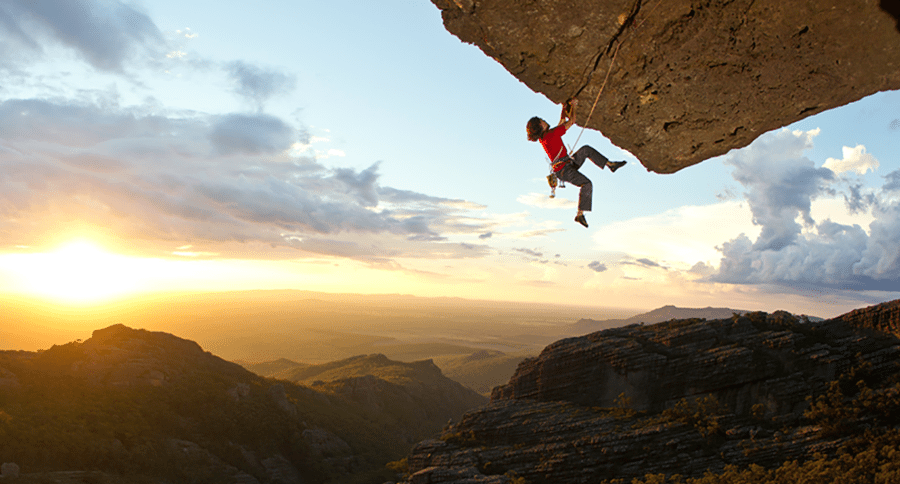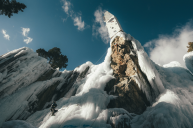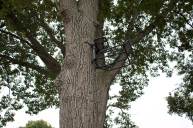Anchor, belay, bight, gobis, pitons, chock, prusik, traverse. If you're asking yourself, "What did he just say?", you're not alone. Just about every outdoor pursuit has developed a language of its own. Some of the extreme or thrill sports are the most notorious for this.
This language development isn't reserved for thrillists , it is indicative of our human culture as a whole. We tend to develop languages within groups to express what we feel, think, hear, etc. This development can also make a newcomer feel a bit apprehensive and may even run them off.
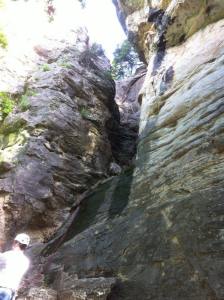
Image courtesy Daniel Leathers
Climbese (the language of climbing) is full of words that seem like gibberish or mean things completely different than what one would think. The words at the beginning of this article all come from climbing and rappelling. In recent years, climbing has become a popular sport across the dashboard of race and ethnicity. There are even sub-cultures within the overall climbing world. You can lead-climb, free-climb, boulder, etc.
No matter the language, culture, sub-culture or other division, one thing is sure. Climbing is fun, athletic, challenging and dangerous. There's no doubt, you can lose your life or be seriously injured while climbing. However, statistically speaking it is one of the safest of the extreme sports. Climbing employs over a hundred years of experience to hone and refine the techniques and equipment that is used.
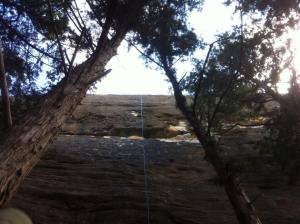
Image courtesy Daniel Leathers
Don't get caught up in the mentality of some people that the mountains are the only places to climb. There are numerous locales across the United States to hook a rope, slide into a harness and find your way up a rock face. This is true of seemingly unlikely spots like Iowa. Rivers and streams are some of the best places to find climbing spots.
Many times combining outdoor sports is the best way to enjoy nature. There is a little spot on Russell Creek in Adair County, Kentucky that is perfect for climbing. The seventy foot rock wall drops right to the water with a small ledge to stand on at the water's edge. However, you have to canoe or kayak to get there. You could walk, but tossing your gear in a canoe and paddling downstream adds to the experience.
Wherever you choose to climb, be sure to check local regulations if on a government owned area or get permission from the land owner. Also, don't feel that you have to go straight for a ninety degree vertical or overhang climb. Look for climbs to challenge you, but are still within your abilities. It is important to seek out climbing partners who can teach and not just climb.
So as not to leave you wondering, here are the definitions for the words above.
Anchor: A means by which climbers are secured to a cliff.
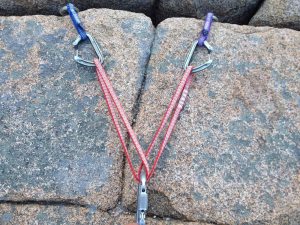
Image courtesy Rock and Ice
Belay: Securing a climber by the use of a rope to control descent.
Bight: A loop (used mainly in ropework).

Image courtesy BC Canyoneers
Gobis: Hand abrasions.
Pitons: Metal spikes in the rock to provide anchors.
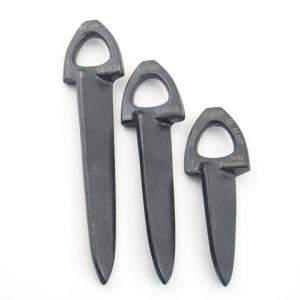
Image courtesy Shopify
Chock: Mechanical wedge that creates an anchor in a crack.
Prusik: A common knot and a means used to descend a rope.
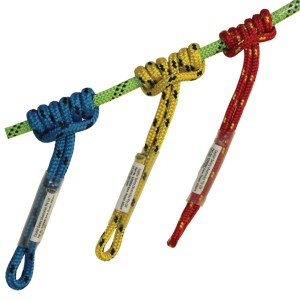
Image courtesy Pitch Engine Live
Traverse: To move sideways without gaining altitude.
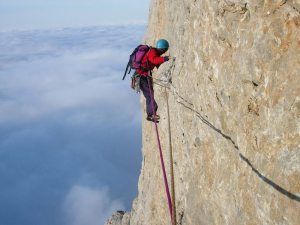
Climbing can be a fun and challenging way to explore and enjoy nature. As usual, if you choose to jump into climbing, seek out coaching from a qualified instructor. Always check your equipment and keep it in good working condition. Also, never skimp on your equipment. Climbing equipment is like the reserve chute for a parachutist, it can save your life.
NEXT: 10 CRAZY CAMPING SETUPS THAT ARE DEFINITELY NOT YOUR AVERAGE RV
https://rumble.com/embed/u7gve.v3tpld/
